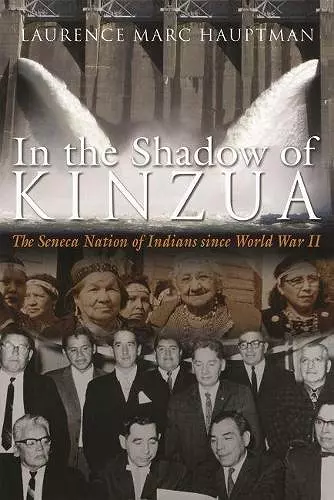In the Shadow of Kinzua
The Seneca Nation of Indians since World War II
Format:Paperback
Publisher:Syracuse University Press
Published:28th Jan '16
Currently unavailable, and unfortunately no date known when it will be back

Kinzua Dam has cast a long shadow on Seneca life since World War II. The project, formally dedicated in 1966, broke the Treaty of Canandaigua of 1794, flooded approximately 10,000 acres of Seneca lands in New York and Pennsylvania, and forced the relocation of hundreds of tribal members. Hauptman presents both a policy study, namely how and why Washington, Harrisburg, and Albany came up with the idea to build the dam, as well as a community study of the Seneca Nation of Indians in the postwar era. Sold to the Senecas as a flood control project, the author persuasively argues that major reasons for the dam were the push for private hydroelectric development in Pennsylvania and state transportation and park development in New York.
This important study, based on Hauptman’s forty years of archival research as well as numerous interviews with Senecas, shows that these historically resilient Native peoples adapted in spite of this disaster. Unlike previous studies, he stresses the federated nature of Seneca Nation government, one held together in spite of the great diversity of opinion and intense politics. Indeed, in the Kinzua crisis and its aftermath, the Senecas truly had heroes and heroines who faced problems head on and devoted their energies to rebuilding their nation for tribal survival. Without adequate financial resources or college diplomas, they left legacies in many areas, including two community centers, a modern health delivery system, two libraries, and a museum. Money allocated in a ""compensation bill"" passed by Congress in August 1964 produced a generation of college-educated Senecas, some of whom now work in tribal government making major contributions to the nation’s present and future. Facing impossible odds and forces hidden from view, they motivated a cadre of volunteers to help rebuild their devastated nation. Although their strategies did not stop the dam’s construction, they laid the groundwork for a tribal governing structure and for other areas that followed from the 1980s to the present, including land claims litigation and casinos.
Laurence Hauptman has decades of experience working with Senecas, and an unparalleled knowledge of the archives of modern Seneca history. In the Shadow of Kinzua blends these in a truly compelling fashion to show us the obvious and not–so–obvious effects of the Kinzua tragedy.""—Karim M. Tiro, author of The People of the Standing Stone: The Oneida Nation from the Revolution through the Era of Removal
ISBN: 9780815634621
Dimensions: unknown
Weight: 638g
456 pages